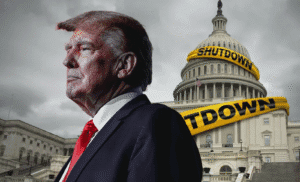Recent shifts in consumer spending patterns are forcing major brands to contend with a more divided customer base. Rather than a uniform “mass market,” companies are navigating what analysts call a “K-shaped” economy in which lower-income households are pulling back while higher-income consumers continue spending.
The Two-Tier Consumer Reality
In the fast-food space, McDonald’s reported a sharp drop in traffic from lower-income customers, while visits from higher-income patrons grew by comparable amounts. The company attributed the downturn among cost-sensitive customers to mounting pressures including rising grocery, housing and childcare costs. Meanwhile, in the beverage sector, Coca‑Cola flagged the rise of affluent consumers opting for premium-brand offerings even as price-constrained buyers seek smaller sizes or cheaper alternatives. This bifurcation means that brands no longer face a single unified consumer base but rather two distinct segments: one constrained and retrenching, the other still able to spend.
Implications for Brand Strategy and Pricing
For marketers and executives the implications are significant. First, pricing strategies that once targeted a broad middle market must now account for diverging income trajectories. McDonald’s decision to roll out $5 and $8 meal deals reflects its attempt to retain lower-income customers even as menu inflation reaches 40 percent since 2019. Second, brand portfolios need segmentation that addresses both tiers. Coca-Cola’s pivot to premium labels for higher-income consumers and the adjustment of size and pricing for value-seekers illustrates this dual strategy. Third, promotional and loyalty programs gain elevated importance for brands seeking to retain the financially stretched segment; yet such efforts must not undermine the pricing power needed to serve affluent consumers.
Broader Economic and Market Vulnerabilities
Beyond individual companies, the emergence of a K-shaped consumption pattern raises broader risks. When spending by less affluent households shrinks, the economy’s growth becomes more dependent on high-income consumers, a narrower base that could expose brands to higher volatility. Moreover, the divergence may deepen social and macroeconomic fault-lines as lower-income groups curb discretionary spending while the wealthiest sustain a different consumption rhythm. From a brand health perspective, overly focusing on affluent consumers risks alienating the mass-market foundation many companies historically relied on.
Taking Action: What Brands Should Do
In this environment brands must reassess value propositions and align them to differentiated consumer realities. Companies should design tiered offerings: affordable, high-value formats for budget-constrained customers and premium options that cater to higher spenders. They must also refine segmentation and analytics to monitor which income strata are growing or shrinking and tailor product, pricing and communication accordingly. Lastly, brands should consider the long-term consequences of pricing strategies: excessive price hikes may drive away volume in the lower tier, while overly aggressive discounting risks margin erosion.
A Final Note
Income inequality is no longer just a macroeconomic headline, it is reshaping consumer behaviour in fast food and beverages. Brands that recognise the diverging trajectories and calibrate offerings accordingly will be better positioned to navigate the two-tier market. Failure to adapt risks losing relevance either among the tightening lower segment or the growing premium tier.














